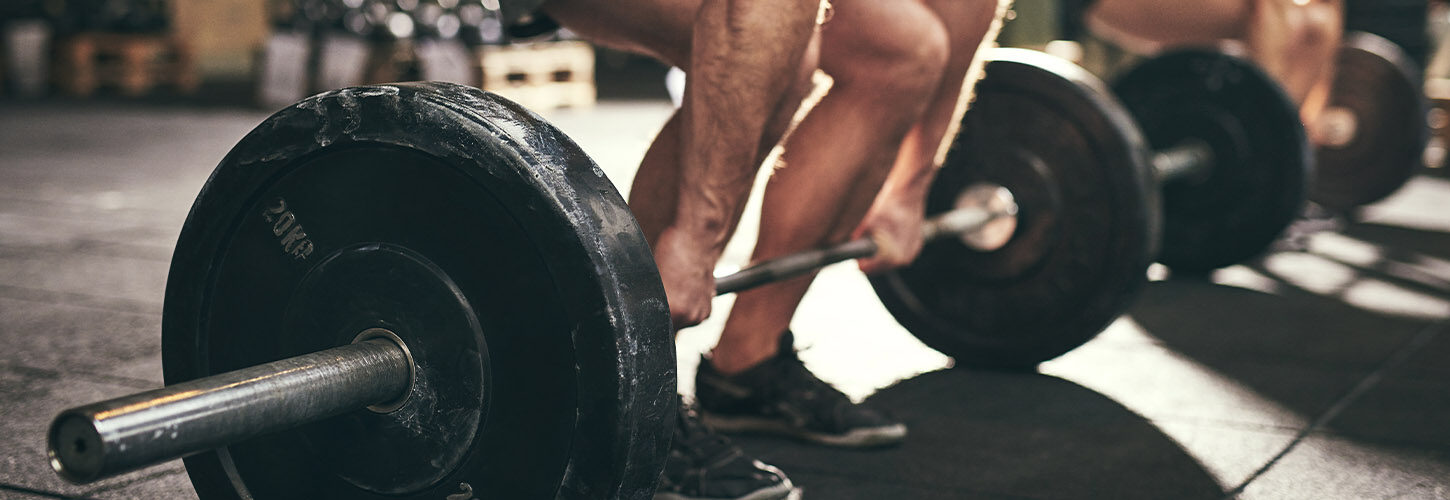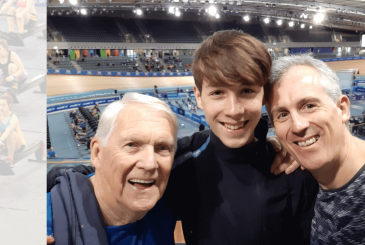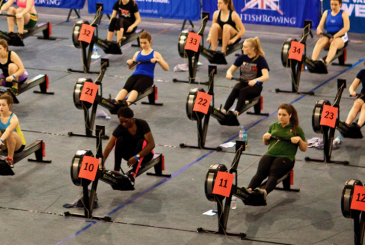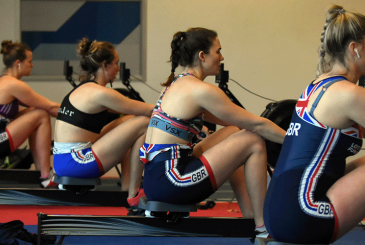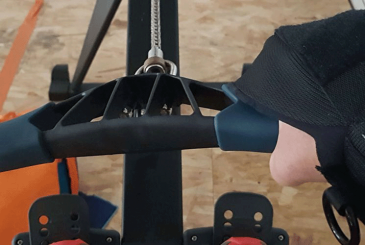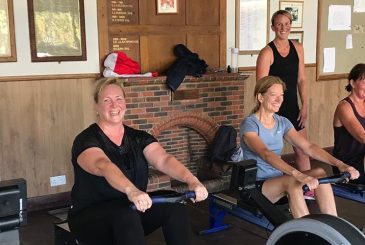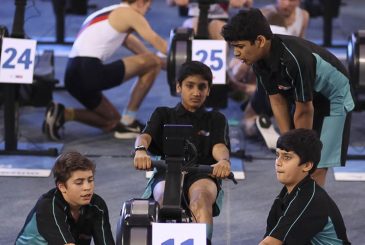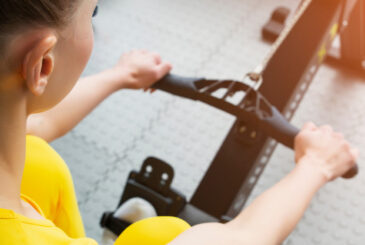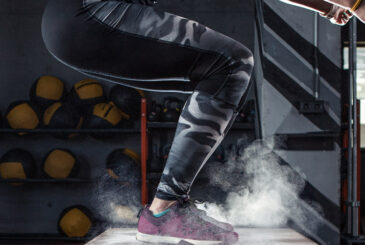The deadlift is a key strength exercise. As high loads can be lifted during the lift, technique is crucial to avoid lower back pain and injury. When executed correctly, the deadlift will predominantly utilise the gluteus maximus, quadriceps, hamstrings, adductor magnus and erector spinae.
Technical model
Set-up
Firstly, it’s important to grip the bar and not let it hang off the finger tips. Gripping encourages the rower to set their upper back properly. Your hand position should be comfortably outside your legs. The knees should be bent, so that the hips are set lower than the shoulders. The arms are extended. The bar should be in contact with the shins. The shoulders should be in line or in front of the bar. The chest is up and the shoulder blades pulled back and down. The weight should be pushing through the mid-back foot. To increase technical proficiency, tighten the lower and upper back and place some tension on the bar to prevent spine flexion on first pull.
First Pull (lifting off the floor)
Initiate the movement by pushing through the floor, do not change back, chest or arm position. This phase must be controlled and patient, the bar will be heavy and the movement slow.
Transition Phase (movement around the knees)
While maintaining upper body position, the legs should extend so the bar is able to travel upwards in a straight line. The movement is led by the chest. The shoulders should remain over the bar. The weight distribution should move towards the heel.
Finish
Arms should remain extended and the rower must continue to push through the floor, via the heels, while pushing the hips up and forward. As the hips come forward, allow the shoulders and chest to move towards an upright position. The finish is a standing position.
Bar position
Throughout the whole movement, the bar should remain close to the body. Actively pull the bar towards the body and do not let it drift away.
Lowering the bar
There are beneficial adaptations from lowering the bar in a controlled manner on the posterior chain. This should be done with care and only with sub-maximal loads. To complete this phase, the deadlift movement is undertaken in reverse, beginning with rocking over and letting the shoulders move over the bar. The alternative is to drop the weight on the floor.
Common faults
The key things to look for when coaching a deadlift are: back position, shoulder position, bar position and knee position.
Here are four common faults to look out for:
1. Hips coming up too early on first pull
Technical points: Lower the load. Ensure the hips are set lower than the shoulders at the start.
Coaching cues: Instruct the rower to have a ‘big chest’. Shoulders over the bar. Lead with the chest. Push through the heels.
2. Spine flexion on first pull
Technical points: Lower the load. Place pre-tension on the bar- ie ‘know the load’. Scapula set back and down. Controlled patient lift off the floor.
Coaching cues: Take the slack out of the arms. Instruct the rower to tighten their back. Don’t attempt to lift the bar off the floor at full speed. Be patient. Instruct the rower to have a ‘big chest’. Lead with the chest.
3. Bar not close enough to the body / shoulders do not remain over the bar
Technical point: Where is the body during the transition phase?
Coaching cues: Instruct the rower to pull the bar into the body. Keep the shoulders over the bar for longer.
4. Valgus knees (internal knee rotation)
Technical point: Foot position.
Coaching cues: Widen the feet and point the toes outwards to 10 and 2 o’clock positions. Drive the knees outwards away from each other.


